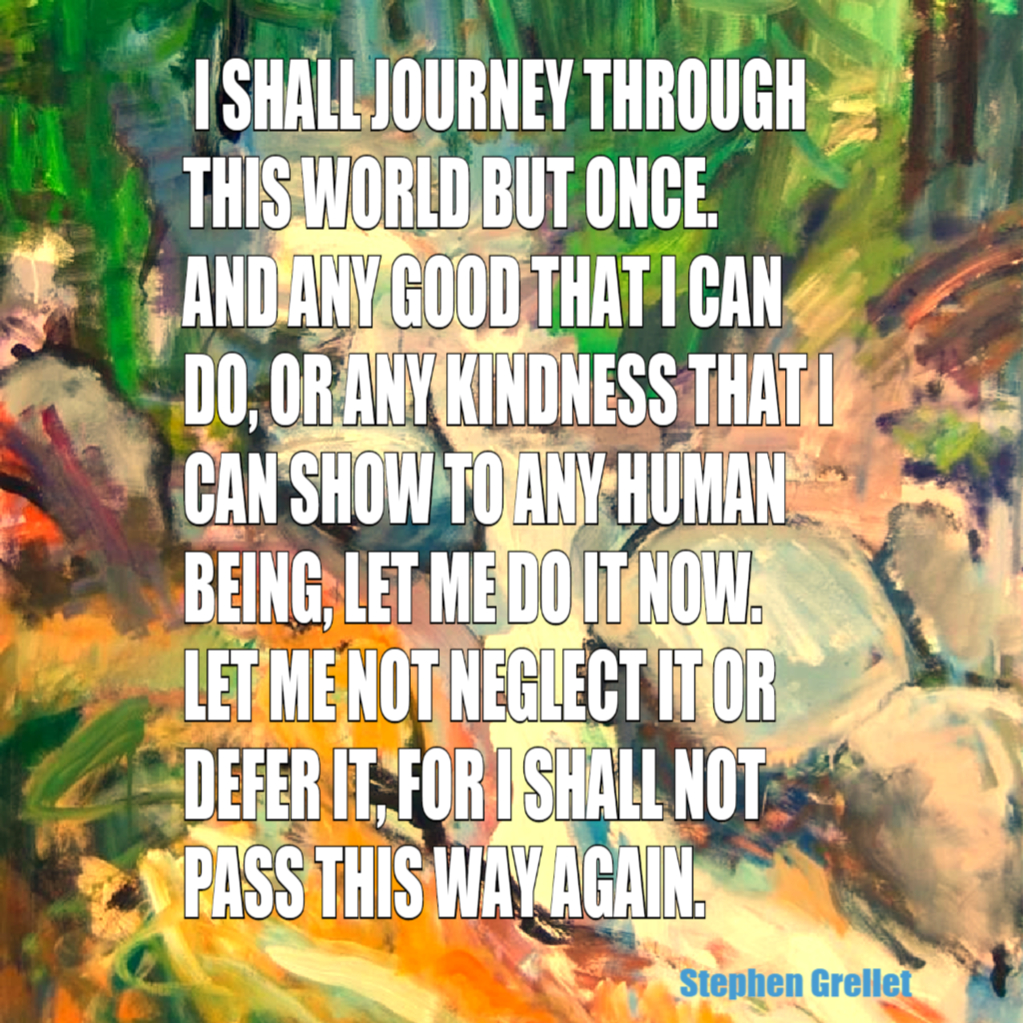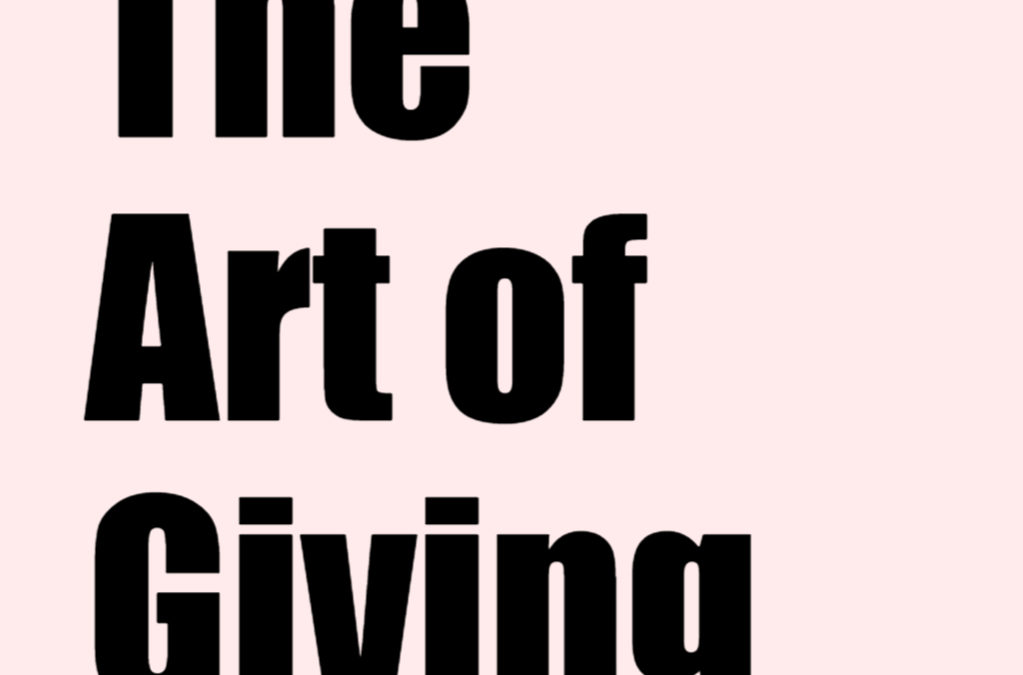The Art of Giving: The lores and legends of cultures around the globe are replete with stories and myths, recounting men who placed the spirit of Giving over their own happiness even at the risk of losing their own lives.
“So long as the millions live in hunger and ignorance, I hold every person a traitor who, having been educated at their expense pays not the least heed to them” etched Swami Vivekananda into one of his letters to Alasinga Perumal of Chikkamangalore.
Hindu Philosophy suggests that all of us came into existence by drawing life forces from the panchabhoothas and are bound to dissolve into the same. Some visionaries see this as a testament to the balance between ‘giving and taking’ that exists in the universe.
One of the five pillars of Islam is Zakat (that which purifies). According to this covenant, every Muslim who earns more than a basic amount of money called nisab must give 2.5% of their annual savings to the needy.

International Art of Giving Day: May 17
In Chapter 2, Verse 47 of Bhagavat Gita, Krishna advises Arjuna to commit actions as Nishkama Karma or selfless actions devoid of expectations on the results. Giving is classified as rajasik, and therefore inferior, if it is done with an intention to gain name, fame, or spiritual merit.
Generosity is not just about the actions; it is more about the intention behind those actions. Therefore, this article is about the spirit and the mind of a giver. It is about the frame of mind while giving, as much as it is about the actual act of giving.
Evolving to be Humane: Civilizational shifts, Biological Changes
India ranks 129 among 189 countries in its Human Development Index. Year by year, the wage gap between the highest and lowest paid lots is increasing.

Source: Oxfam, Statistics in India
There was a time when every decision was made keeping survival in mind; auto regulating body’s metabolism to match food availability, storing enough food supplies to get through harsh weather, and deciding marriages based on the livestock of the prospective partner.
Look at the world around us now, recounting history; we have come so far! We are at a better place in the history of human-kind now. But the ancient survival instincts of ‘take, take, take’ and ‘give and take’ seem to be burned in the back of our minds. Instead of trying to be more generous, humans are increasingly training their higher faculties to be an accumulator instead of a giver.
If we raise kids by teaching them the joy of sharing instead of accumulation, they may grow up to be more giving adults.
Beyond Money & Material
Take the example of a mason who had to be counseled against the idea of making a huge material donation to an orphanage, or another example of a retired government employee, who wanted to donate all of his life’s savings to a charity. Surprisingly in both cases, their family members were also supportive of their generosity.
All of them had to be counseled against the idea of donating so much. There are some people who are so passionate to give that they go beyond their/ their family’s capacity to give. Therefore, the receivers of charity must check if donations negatively impact the donor beyond a point of leading a self- sustainable life, and counsel them against it if need be.
Every act of empathy by way of word, deed, or presence can also be charity. Those who feel generous but can’t afford to donate money can be encouraged to donate their skills and time.

A generous state of mind.
Here is a list of 3 Gifts of Non- Monetary Charity:
- Gift of understanding: Interact with everyone from a non- judgmental space. Be present and listen without daydreaming, interrupting, or planning a counter-response. Be in other’s shoes and understand their point of view. Being sensitive to those who want nothing but to be left alone is also priceless.
- Gift of support: Root for someone, take care of them and encourage them; be creative responding to the need of the hour. Surprise someone with a kind compliment, say they are doing a great job, or express gratitude writing a hand note.
- Gift of empathy: Cheerful disposition and affectionate interactions have the power to change the ambiance. Be a loving space. Say hello, thank you or greet with a cheer. A spontaneous smile works beautifully even with strangers.
Thoughtful Charity
Clearly, there are ways of extending generosity beyond money and material called non- monetary charity. Donating time is a profound way of extending generosity. When donating time, give away the total vitality of your life force to the cause.
“Na karmana na prajaya dhanena tyagenaike amrtatva manasah: Neither by actions, wealth or progeny can one attain liberation; it is only attained by the spirit of sacrifice.” _ Kaivalyopanishad
Though giving is seen as a path to liberation- the highest reward of spirituality- donating to unworthy and futile causes is seen as a sin and classified as tamasik.
There can be many solutions to every problem. Some solutions are temporary quick fixes, while some are long term solutions with compounding returns. Choosing a worthy cause to give donations is indispensable.
Let’s say, we are trying to get rid of hunger and poverty: giving people free lunches and distributing money is one way to solve the problem. However, it is unsustainable and has no long- term returns. Besides, it can cause diminishing returns by making people dependent, entitled, and accustomed to receiving freebies without working.

Capacity building over mindless charity.
Providing employment opportunities, skill up-gradation to make the unemployed job-ready, incubating entrepreneurial ideas, providing free medical facilities, subsidized ration, improving literacy levels, and creating awareness about personal finances are the most efficient ways to tackle hunger and poverty in the long run.
Isn’t it wise to ensure that the donations- your hard-earned money- are not wasted? This is why it is wise to verify if the vision of the receivers is efficient, sustainable, and long-lasting beforehand.
States of Mind: Forgiving a foe or fighting one?
Let us share the story of a young man, who was mobbed and dehumanized by a group. They took away his life and mocked him until he died. But the young man didn’t breed resentment towards them; he didn’t flinch in his generosity and forgiveness.
“Father, forgive them; for they know not what they do” _ Jesus
The young man is Jesus of Nazareth. What would make others bitter only made him kinder. His spirit of sacrifice would be recalled and remembered for ages to come.

Here and Now!
Let us now look at the story of Malala Yousufzai, who got shot in her face when she was 15. This young recipient of the Nobel Peace Prize stood against the Taliban terrorist group to stand by girls’ right for education.
“I am not against anyone, neither am I here to speak in terms of personal revenge against the Taliban or any other terrorist group. I’m here to speak up for the right of education for every child. I want education for the sons and daughters of the Taliban and all terrorists and extremists.” _ Malala Yousufzai
What would make others retreat only made her braver. She embodied generosity and extended her purpose to the children of her attackers also. For a change, she did not give in to the animal instincts of fear or revenge.
All acts of generosity may not look similar. Generosity has more to do with the intention behind a deed than the deed itself. Jesus forgave as Malala peacefully fought. But what is common between these two, who did seemingly different actions, is their compassion. They both exemplify that empathy is deeper than the outer shell of what our actions look like.
Next time, whether you are fighting a foe or forgiving one, ask yourself if it is coming from a generous state of mind.
Act of giving or state of being?
A scientist once resigned his high paying job, returned to his village and started an NGO. At the time, it was a risky decision to throw away a life of certainty for himself and his family. Such acts of generosity are no cakewalk; they require one to fight self-doubt and fear.
Embodying the spirit of sacrifice took courage. When asked if he regrets wasting his talent, he shared that he knew many who can replace him at his job, but very few that have a similar desire to serve.

The man understands his inclination to serve as synonymous to who he was. To people like him, generosity is not an act they participate in once a year, it is not a value they switch on when they feel like; the spirit of sacrifice becomes their second- nature. Their generosity is not expressed as an action; it is experienced as a state of being.
Today, let’s celebrate The Art of Giving by being a noble space of generosity. Who knows how many lives it will touch and how many destinies it can drive?
*The authors are R.A. Rao & Pavani Sairam.
A briefer version of this article appeared in the Economic Times: The Art of Giving in ET
To read an article on the ideas of success and the role of opportunities as experienced by Team PCT, Click here.



Thanks for the good article, I hope you continue to work as well.Спаситель на продажу
I would like to thank you for the efforts youve put in writing this blog. I really hope to see the same high-grade blog posts from you in the future as well. In fact, your creative writing abilities has encouraged me to get my own website now 😉
Itís difficult to find experienced people in this particular subject, but you sound like you know what youíre talking about! Thanks